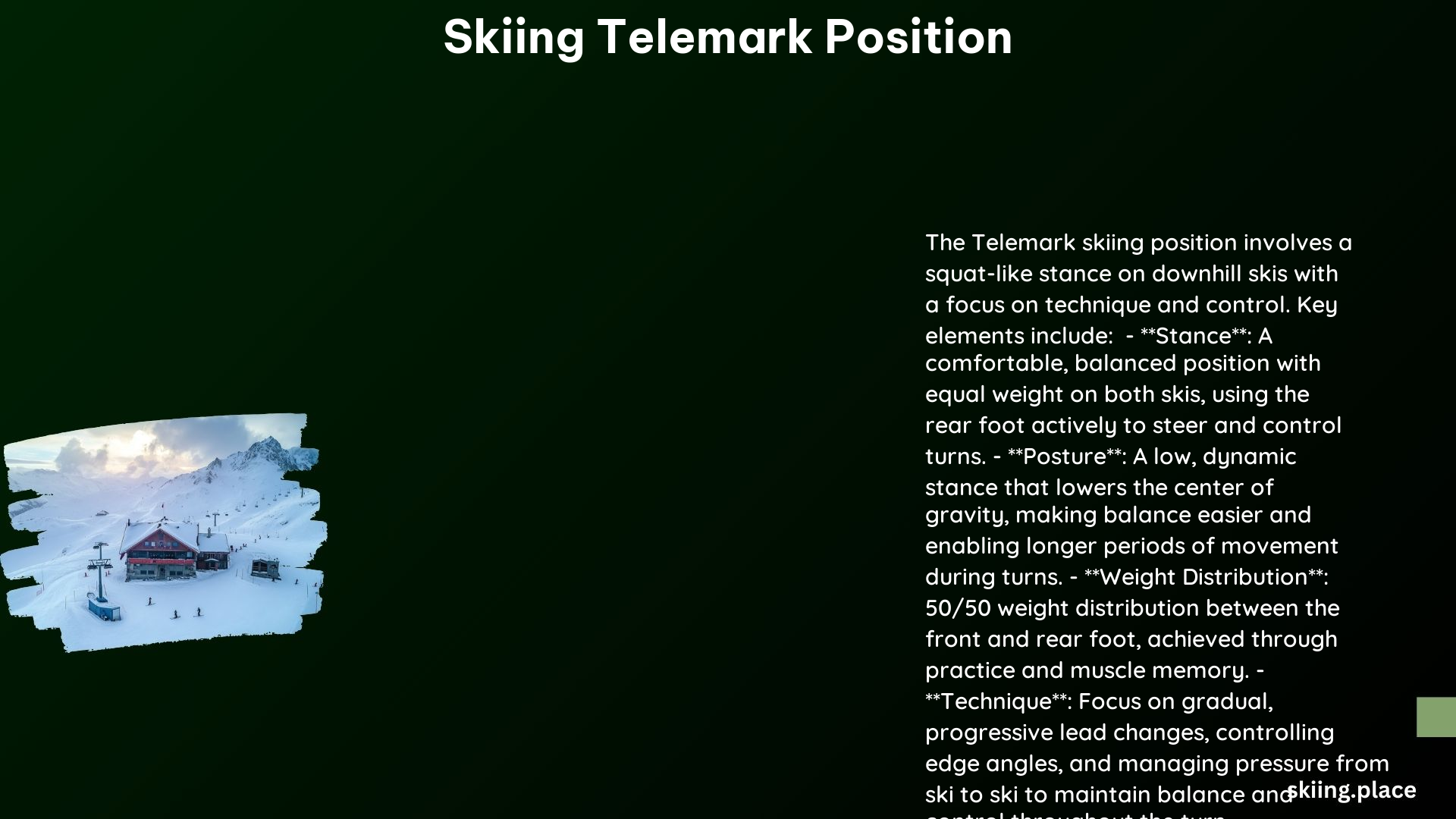Telemark skiing is a unique and graceful style of skiing that requires a specific body position and weight distribution. In this comprehensive guide, we will explore the key aspects of the telemark skiing position, including weight distribution on the outside ski, transitioning between turns, and the depth of the telemark stance. By understanding these fundamental elements, you can improve your telemark skiing technique and enjoy a more fluid and controlled ride on the slopes.
What is the Ideal Weight Distribution on the Outside Ski in Telemark Skiing?
The optimal weight distribution during a telemark turn is around 50% on each ski. This equal weight distribution allows for stability and smooth turns, as it creates a balanced platform for the skier. However, there are variations in weight distribution depending on the specific skiing conditions and personal preferences.
Carving and Racing
For carving and racing, it is recommended to have 80% of your weight on the front leg (outside ski). This increased edge pressure and angulation helps to improve grip and responsiveness, essential for high-speed turns and precise carving.
Moguls and Powder
In more challenging terrain, such as moguls and powder, a weight distribution of 55-70% on the front ski is suggested. This helps to maintain a strong platform and edge hold, providing better control and stability in these variable conditions.
Personal Preference
Some skiers may prefer a 60-40 or 70-30 weight distribution, with more weight on the rear leg. This can provide better control and a lower stance, which can be beneficial for certain skiing styles or personal comfort.
How to Transition Smoothly Between Telemark Turns?

Transitioning between telemark turns requires a specific set of mechanics to ensure a smooth and continuous flow.
Bending the Inside Leg
To initiate a turn, bend the inside leg while keeping the outside leg straight back. This shift in weight and leg position helps to control the direction of the turn.
Transferring Weight
As you turn, transfer your weight to the outside leg by stretching it backwards. This prepares the outside ski for the next turn and maintains constant pressure on the edges for optimal control.
Smooth and Continuous Transition
Ensure a smooth and continuous transition between turns by maintaining a stable stance and avoiding any loss of speed or control. This requires practice and a keen awareness of your body position and weight distribution.
What is the Ideal Depth of the Telemark Stance?
The ideal depth of the telemark stance is characterized by a slight bend in the knees, with the inside leg bent forward and the outside leg straight back. This position provides better stability and control.
Measurements or Angles
There is no specific measurement or angle for the ideal depth, as it varies depending on the skier’s comfort level and skiing style. However, a lower stance generally provides better control and stability.
Variations Based on Terrain or Skiing Style
On steep slopes, a lower stance is recommended to maintain better control and stability. In powder and mogul conditions, a slightly higher stance may be necessary to maintain a strong platform and edge hold.
